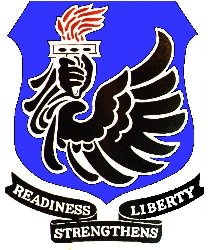
Constituted as 394th Bombardment Group (Medium) on 15 Feb. 1943. Activated on 5 March 1943. Trained with B-26's. Moved to England, Feb.-March 1944, and assigned to Ninth AF. Entered combat in March 1944 and helped to prepare for the invasion of Normandy by hitting V-weapon sites, marshalling yards, bridges, airdromes, and gun emplacements. On D-Day, 6 June, bombed gun positions at Cherbourg; afterward, struck communications, fuel supplies, and strong points in support of the Normandy campaign. Aided the breakthrough at St. Lo by bombing targets int he area on 25 July 1944. Received a DUC for operations from 7 to 9 Aug. 1944 when the group made five attacks against strongly fortified targets in northern France, knocking out an ammunition dump and four railroad bridges. Capt. Darrell R. Lindsey was awarded the Medal of Honor for leading a formation of B-26's over one of these bridges on 9 Aug. During the flight, Lindsey's plane was hit and the right engine burst into flames. Knowing that the gasoline tanks could explode at any moment, he continued to lead the formation until the bomb run had been made, then ordered his crew to bail out. The bombardier, the last man to leave the plane, offered to lower the wheels so that Lindsey might escape through the nose of the aircraft, but realizing that this could throw the plane into a spin and hinder the bombardier's chances to escape, Lindsey refused the offer and remained with his B-26 until it crashed.
After moving to the Continent late in Aug. 1944, the group hit strong points at Brest and then began to operate against targets in Germany. Took part in the Battle of the Bulge, Dec. 1944-Jan. 1945, by hitting communications to deprive the enemy of supplies and reinforcements. Bombed transportation, storage facilities, and other objectives until the war ended; also dropped propaganda leaflets. Remained in the theater to serve with United States Air Forces in Europe as part of the army of occupation. Redesignated 394th Bombardment Group (Light) in Dec. 1945. Began training with A-26's. Transferred, without personnel and equipment, to the US on 15 Feb. 1946. Inactivated on 31 March 1946.
Redesignated 106th Bombardment Group (Light). Allotted to ANG (NY) on 24 May 1946. Extended federal recognition on 21 March 1947. Redesignated 196th Composite Group in Nov. 1950, and 106th Bombardment Group (Light) in Feb. 1951. Ordered to active service on 1 March 1951. Assigned to Strategic Air Command. Redesignated 106th Bombardment Group (Medium) in May 1951. Equipped with B-29's. Inactivated on 16 June 1952. Redesignated 196th Bombardment Group (Light).
$con.insigne
$con.links